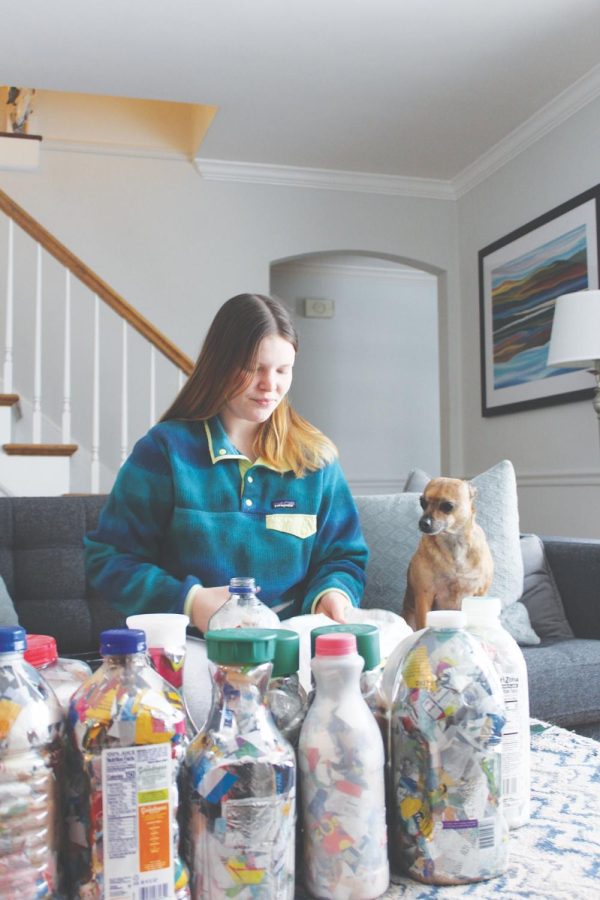A new approach to recycling plastic
Collect plastic, wash, dry, cut and stuff it into a bottle.
Senior Emma Larsen stumbled upon bottle bricking, an at-home alternative to recycling plastic, while watching her usual lineup of environmental influencers on YouTube.
Bottle bricking is the process of packing small pieces of plastic, such as food wrappers, store bags and Styrofoam products, into plastic bottles. As the plastic hardens over time, it becomes a “brick” that can be used to build benches, houses and other structures.
“A lot of the things that we recycle don’t end up getting recycled, and you can recycle most plastic wrappers if you wash them, but a much better choice is to take it into your own hands by doing something like bottle bricking,” said Larsen. “When you do it yourself, you’re making sure that the waste is staying in one place, and you’re preventing the chance of it flying away into natural areas.”
According to Courtney Gallaher, associate professor of geographic and atmospheric sciences at Northern Illinois University, recycling practices in the United States often involve plastic being diverted to landfills, so bottle bricking can be a good option for reusing plastic.
“From the sense that this new [bottle bricking] is a novel way to use plastic that already exists, I think that’s really useful,” said Gallaher. “And I think it can definitely be a utility in low-income countries where they don’t have any or adequate recycling systems in place.”
According to Environmental Club sponsor Amy Ludolph, while bottle bricking can be beneficial for some developing countries, it can incentivize more people in the United States to use plastic.
“If you had a collection [of plastic] that was already generated, then I can see that [bottle bricking] would be a good use for it,” said Ludolph. “I don’t think it’s a bad idea. It has its right place. I certainly would want to make sure that however it was done, it was done in a way that wasn’t incentivizing, with no additional use of plastic. It would have to be something that had maybe had already been collected from some other source, like you’re getting it from trash or something like that.”
According to Larsen, although bottle bricking may not be the most environmentally friendly option available, it has its benefits.
“I definitely think there are better forms of helping the environment,” said Larsen. “I think the best thing you can do is avoid or eliminate plastic consumption. But for a lot of people, especially high schoolers who live with their parents, it’s not really an option to completely get rid of plastic consumption. So in my mind, this is like a second best option.”


